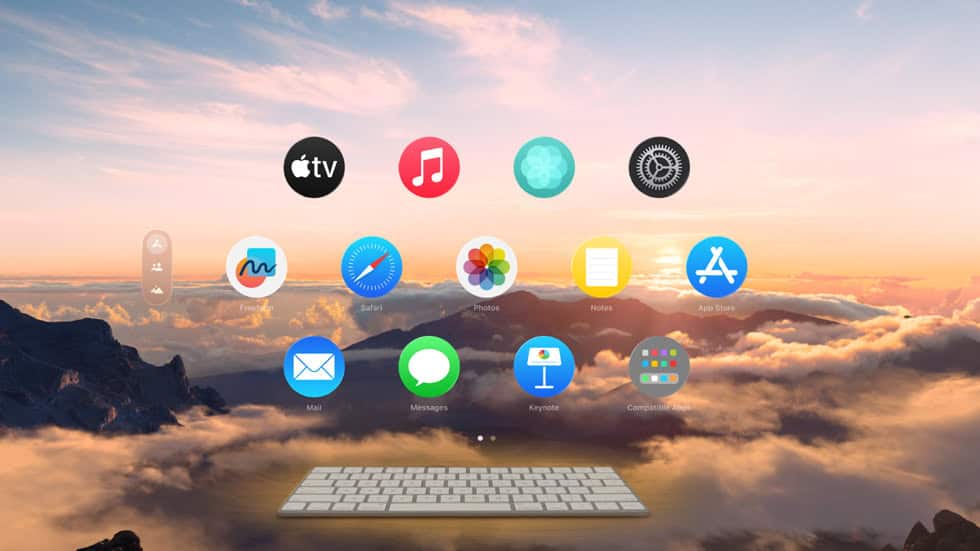The Apple Vision Pro (AVP) and MacBook Pro have several things in common. They’re both expensive, high-performance machines that showcase the company’s latest innovations in the tech scene. With all these common points, you’d think they’d have better UI integration. It’s sad to see that the current setup just makes the AVP feel like a second monitor of your Mac.
I’m hoping that this could change once Apple rolls out the rumored M5 MacBook Pro this year. Features that support data transfers, cloud-based synchronization, and cross-platform compatibility might be what the AVP needs to achieve mass adoption. Here’s what would really benefit us users.
1. Native macOS App Support in visionOS

One of the most requested features is the ability to run full macOS apps inside visionOS. Right now, Vision Pro users can only mirror their Mac display using a Mac Virtual Display. This setup limits interaction to screen projection rather than native execution.
Apple could theoretically introduce macOS app support via virtualization or sandboxed instances that run within a secure container on visionOS. The M5 chip’s rumored performance gains, particularly in memory bandwidth and unified architecture, make this more technically feasible.
If executed properly, professionals could launch tools like Final Cut Pro, Xcode, or Logic directly in their spatial environment. It would turn the Vision Pro from a companion device into a true productivity platform.
2. Streamlined macOS App Offloading to Vision Pro

Another step toward tighter integration would be offloading individual macOS windows to Vision Pro rather than duplicating the whole screen. This isn’t supported today. You can either mirror your Mac display or use visionOS apps, not simultaneously.
Apple can resolve this roadblock with window-level offloading. You’ll be able to pin specific apps or documents into your spatial workspace while still using your Mac for separate tasks.
This setup would enable more focused multitasking. You could keep Slack and Messages floating in your field of view while editing video or code on your MacBook Pro.
3. Shared Apple Intelligence Features Across Platforms

As with other Apple OSes, the rollout of Apple Intelligence for visionOS was relatively slow. We’re only getting a taste of AI features on visionOS 2.4. If the Vision Pro merges with the M5 MacBook Pro, AI tools need to reach spatial computing as well. It might sound ambitious. However, it’s technically viable with on-device processing and a consistent Apple Silicon foundation.
In practice, it would mean being able to summarize PDFs, emails, or web pages inside visionOS. Likewise, you might be able to use Spotlight-like commands with eye tracking and voice, and potentially manage spatial windows through context prompts. It turns Vision Pro into an interactive assistant that works like Apple Intelligence on Mac but is optimized for spatial input.
4. Improved Developer Tools for Cross-Platform Apps

Right now, visionOS development requires learning new APIs and UI frameworks specific to the platform. While SwiftUI is shared, the overall app model differs from macOS. This fragmentation is a major pain point for developers, especially smaller teams.
Apple could improve this by expanding Catalyst, SwiftUI previews, or even introducing a new unified runtime that targets both macOS and visionOS from a single codebase. The M5 launch offers a clean point to announce this.
Better tooling would lead to more apps that feel consistent across devices without requiring major rewrites. Developers could ship a Mac app and a Vision Pro version with shared UI logic, layouts, and interaction models. This would expand the visionOS app ecosystem and reduce the current lag between Mac-first and visionOS-native experiences.
5. Real-Time Cross-Platform Workflows

The current integration between macOS and visionOS relies on Handoff, Continuity, and iCloud syncing. They’re useful but not instantaneous. Users want faster, real-time interactions: drag-and-drop between devices, a live shared clipboard with preview, or spatial views of Mac documents in apps like Freeform or Keynote.
Applying them would require improvements to low-latency wireless protocols and unified app session management. And as luck would have it, both are possible with M5’s expected hardware acceleration and memory coherence.
There are various real-life applications of these functions in creative and enterprise spaces. Designers could pull an asset from their Mac into a 3D workspace on Vision Pro. Meanwhile, presenters could drop a slide deck from Keynote into a spatial environment while making changes on the Mac. Instead of two devices loosely connected, this creates one fluid workflow.
Unfortunately, we still have a ways to go before reaching a wholly integrated AVP and MacBook Pro. For now, you can explore everything that’s new with visionOS 2.4.
